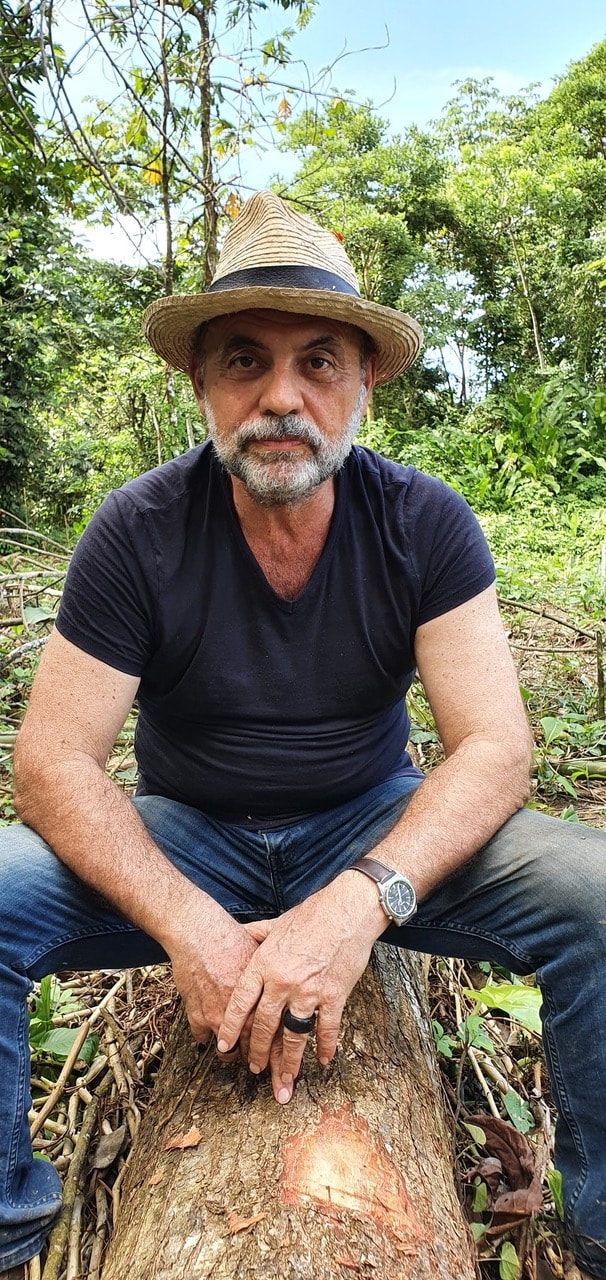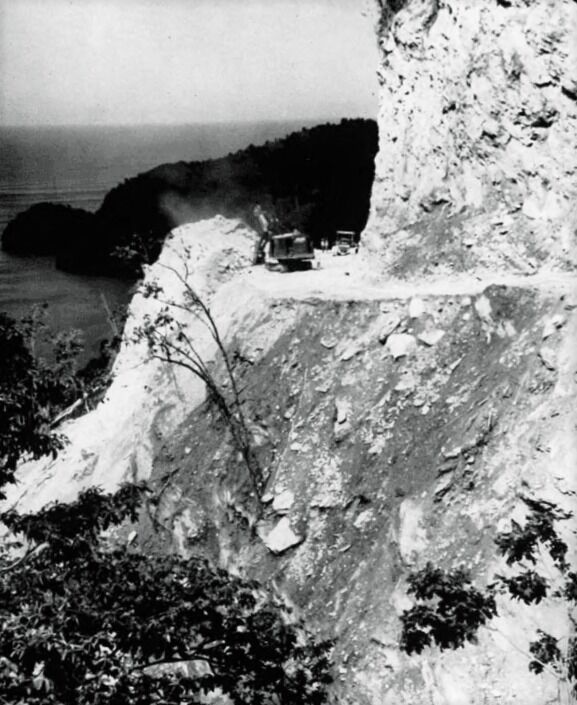|
Mango Lime BBQ Chicken
Ingredients 1 lb boneless skinless chicken breasts, sliced into strips 1 cup cubed mango 3 tbsp freshly squeezed lime juice 2 tbsp extra virgin olive oil 1 tbsp coconut sugar (omit for Whole30) 1/4 cup green onion, chopped 3 cloves garlic 1/4 cup cilantro (leaves and stems) 1.5 tsps sea salt Directions
0 Comments
Hundreds of Venezuelans returned to their homeland on Sunday after being repatriated from Trinidad and Tobago.
At the eastern coast of Venezuela, on the port of Guanta, some 330 kilometers east from Caracas, a Venezuelan commercial ferry transported hundreds of Venezuelans who left Trinidad and Tobago for lack of employment due to the COVID-19 pandemic. Valentina Itriago, a repatriated Venezuelan, said she was unable to find work to care for her son: "We returned because in Trinidad and Tobago we didn't have the capacity... I didn't have the capacity to take care of my son. Jobs were scarce because of COVID, I had already been out of work for three months, rents were super expensive. It was time to return." “The only way to work there is cleaning houses. I have an infection on my hands. No. I'm staying in my country. Don't think that being abroad is easy and even less so with a child. It is better to be here in Venezuela than to be abroad." The Venezuelan government began a repatriation plan called "Return to the Fatherland" in 2018 and since then, more than 25,000 Venezuelans have been repatriated from other countries in the region such as Peru, Ecuador and Chile. This return of Venezuelans from Trinidad and Tobago is the first voluntary repatriation to be done by sea - Loop News was told that 680 people Venezuelan nationals made the decision to return home. The process was monitored by officials as passengers were processed prior to departure last Friday. Minister of Foreign and CARICOM Affairs Dr Amery Browne, Minister of National Security Fitzgerald Hinds and Communications Minister Symon de Nobriga were also present to examine the logistics of the repatriation exercise. Source: The Loop, July 19, 2021 Canadian-born actor Brandon Jay McLaren stars in the new Disney Plus Turner & Hooch reboot. He wore a suit from T&T designer DAWW Creations to the premiere Trinidad menswear designer D.A.W.W Creations starred on the red carpet for the premiere of Turner & Hooch on July 1 in Los Angeles.
D.A.W.W Creations outfitted Canadian actor Brandon Jay McLaren who stars in the Disney Plus reboot. Mclaren, who is of Trinidadian and Grenadian parentage, wore a grey suit with blue accents suit designed by Marlon George, owner of DAWW Creations. "The feeling is just gratefulness and thankfulness," said George when Loop news reached out to him. He said a friend, television and film producer Elisha Baptiste reached out to his team about the opportunity and they immediately jumped on it, sending McLaren a video on how to take his measurements. His creative director Cornelius Hector put together some sketches which they presented to the actor and he selected one of the options. "We used the finest material, wool blends, to bring it to life," said George. McLaren, who recently starred in Netflix' Firefly Lane as Travis, plays Xavier Wilson in the reboot of the 1989 American buddy-cop action-comedy which starred Tom Hanks. Source: The Loop, July 16, 2021 My name is Piero Guerrini and, 28 years ago, I came to Trinidad for ten days. I’m still here.
I come from Grande Riviere but I was born in Italy. My father used to be a coal miner in Belgium and he would talk about how wonderful it was for him, as a young man, to go from Italy to a different country. My father used to go 1,000 metres below ground level to literally pickaxe coal out of the rock. He was paid by the amount of coal he was able fetch out of the mine every day. But he always passed me this idea of travelling. Since I’m 18, 19 years old, I’m saying, “Daddy, I’m not going to live in Italy. I want to travel.” Finally, my father said to me, “Okay, I would like you to be close to me but you go ahead.” Since 20, I’ve been travelling. I became a photographer, because it combined my lifestyle and my desire very well. I travelled so much. Until I reached Trinidad and Trinidad chose me. From the first day, it was love at first sight. I’m vegetarian. I’m against industrial food. My life has been divided into three parts. I was a photographer and then I was a hotelier on the beach. Not many people know the first part: I was a professional footballer. I used to play No. 10. Of course. Long hair. Everybody said Piero is going to be a great footballer. I had big promise in Italian football. I tried for Juventus, Bologna. I got a back injury when I was 19 and start to have problem. My only child, Aurora, 23, started doing a masters degree on a scholarship at Oxford and her professor said, “You can skip the masters and go straight for the PhD.” I’m very proud of her achievement. She is the president of the Conservative Students Association. I don’t know, maybe she rebelled [against me] by becoming a conservative. She tells her friends her dad is a hippie. I lost my father two years ago and, to be honest, I was losing my way. I was single, frustrated, working all the time. I wasn’t happy. I wasn’t sleeping well. I had gained some weight. And then, in two wonderful months with my mother, she told me all the things she hadn’t before. How my parents met, what they did together. When I came back, I start to think, “I need not to be alone anymore.” And then I met Sali. The lockdown gave us the possibility to really get to know one another. She is my “one”. You have to go back to who you are, the person you really are. You have to not be afraid to [allow] yourself [to come] out. I lost 20 lbs. Now I am the Piero I know I wanted to be. Now I sleep well. I met [Trinidadian/St Lucian poet] Derek Walcott in Boston during the Nobel Prize tribute celebration as well as [late musician] Andre Tanker, actor Albert Laveau, Glenda Thomas [now Collens see Trini to D Bone 19 April 2021]. Derek said, “You wouldn’t believe the talent that is in Trinidad!” Glenda came in and start to sing. He said, “And she’s unknown in Trinidad!” Every year, as a photographer, I did a series called, “The World of” [that year’s Nobel Literature Prizewinner] and so I came to Trinidad to photograph Derek. The year before, I’d gone to South Africa, when Nadine Gordimer had won the prize. Back then, the “BeeWee pass” [let you] go in all the BeeWee destinations for US$300. So I went in 14 different islands. But Trinidad was, immediately, immediately, the place I was looking for. I had a part in Damian Marcano’s short film, Cheese, but I don’t know anything about music or movies after the 90s. When I go to show her a film, Sali always asks, “And how old is this one?” At Maria Regina Prep School, there was every possible race and class of child. Brian Lara daughter was in class with my daughter. In another country, a person like Brian Lara would have fans [smothering him]. Here, he’s just like a normal person. And there were kids of security guards, working class people, whatever. I always tell Aurora she should be thankful to grow up in such a wonderful environment. I used to say, Trinidad is my India AND my Africa. You don’t need to travel far away because EVERYTHING is in Trinidad. After arriving, I didn’t go anywhere for four years. I was in the Trini lifestyle. [During] my trip to Trinidad, the Mt Plaisir Hotel property became available. When the owner saw the white man, she doubled the price but she accepted my counter-offer and we opened up that December. We only had three rooms at first. One of my staff was a Spiritual Baptist and she went on a fast. I asked her to ask if Mt Plaisir would be successful. When she came back, she said it would be so successful you won’t believe it. And it was true. Everything has been beyond my expectations. The success almost trapped me in the business. I don’t think I will continue with the same intensity without Aurora but it has been a fascinating journey. There were a lot of setbacks for Mt Plaisir. The beach was almost completely washed away, and the hotel. Two qualities, patience & resilience, were missing in my personality. I’m very happy Trinidad taught me patience. I used to be very stubborn. [Trinidad has turned] that stubbornness into resilience. The people of Grande Riviere, they adopt me, they accept me, they help me, they support me. They still do. It’s amazing. They say home is where you feel loved and protected and that for me is Grande Riviere. I sleep with door and window open, even in these days. I talk to all the so-called bad boys., all the boys I used to give one day of work on Saturday morning, to collect the leaves on the beach. All these years, I haven’t changed my relationship with them. My story with turtle: I arrived in Grande Riviere in August and there were no turtle and I thought people telling me about these huge turtle coming to the beach were exaggerating about their size and number. The first time I saw a turtle was on my birthday, 27 February 1994, with my father, and I was astonished by the size! I lay down on the sand to compare my size and she was bigger than me. When I came, the beach had 2-4K turtle per season. I encouraged the people of the village to protect the turtles and they really got organised on the right track. After 27 years, Grande Riviere, with 30-40K nesting per year, is now considered the leading place in the world to watch leatherback. I had so much expectation of the new post-Covid world. I thought our government would see some new light but, no, they are blind and continue to go down the same road. I made a proposal to [government advisory] committee. They said thank you. A UNESCO Heritage Site [status] for the beach would bring more exposure and financing. But, unfortunately, the government is focussed on different things. My big [personal] change came when I was 27. A psychologist friend in Italy and I, we used to go walking around and talking in the night and, one night, he decide to go deep on me and really put me through some psychoanalysis tests. He made me cry because I discovered certain things but, from that day, I took control of my life. I decide to become a photographer. I became much more stubborn Life always is full of surprises. I love Carnival and my desire is to photograph it in a way that hasn’t been done before. I was getting into Carnival when Peter [Minshall] was active. He was the only one who captured my desire to free myself. I did M2K and Lost Tribe. I don’t take part any more. It doesn’t grab my gut. The soul of Carnival has been lost somehow. [Younger people today] don’t know what we used to have in Carnival. Before Covid, I would walk in Port of Spain, just to look at the people. You see this beautiful face, this incredible combination of every possible race. Chinese/black, Indian/white, any kind of whatever. I still love it. Even though everybody’s masked up now. That beautiful energy of the country is still there. Now you have to be attentive, if someone is following you for some reason. Maybe this paranoia about crime, all these things have their consequences on our psyche. [After] Covid, I see people being very unkind. Not the Trinidad that I know. In 2001, when he won the Nobel Literature Prize, VS Naipaul wanted photographs for new editions of his books. He spent two days with me in Grande Riviere and he was amazing! Absolutely wonderful! I’m probably one of the few people in the world who have this sweet idea of VS Naipaul. He was so curious about my life, asked me so many questions, I thought he might have been doing research for some book or something. He used to hold my hand to go and see turtle. I did the cover of Guerrillas, A House for Mr Biswas and The Night Watchman’s Occurrence Book. He invite me to his house to photograph him. Instead of me going to look for people, people started coming to my little universe, artists, interesting people coming to stay. Sir David Attenborough has been several times. Peter Doig became famous through the work he did in Grande Riviere. Chris Ofili. Margaret Atwood, a birdwatcher, came for the birds. Grande Riviere still remains that source of inspiration for so many people. I turned the clock 25 years back. I have that same energy. Even the guy working with me [building a house by hand from foundation up], he is 35, 40, and he gets tired right away. I dig my foundation, there are stones in the ground and you have to dig and dig and dig. I’m very happy I still have this romantic idea about Trinidad. All the barbarian attitude of the society has not affected me yet. [Late poet & newspaper writer] Wayne Brown described the Trinidadian as “the people who laugh.” My friend from Miami asked, “Why people laugh so much here?” I say, “That’s how they are.” And, in Conde Nast Traveller magazine, a writer said, in Trinidad, you see people in the morning, happy to be listening to the birds. [For me, then] a Trini is a person who laughs and is happy just to be alive. In the ten years before I came to Trinidad I went to, I think, 65 countries. In Hong Kong, in Kenya, other places I was considering to stay a long time. To me, Trinidad & Tobago was the one place that I felt at home for the first time. Trinidad is home. Source: Trini to d bone, July 17, 2021 When the Macqueripe beach in Chaguaramas was closed to the public in March because somebody allowed a big hole to form in the seawall and the staircase railings began falling off, everybody got stopped from bathing there, while they fixed it.
Then no less than a minister of Government reopened the beach months later, only for the health authorities to realise that the Covid-19 virus loves it when plenty people squeeze into a space the size of a football field. So we all got blanked again, with the ban this time extending to bikers, hikers, joggers and those yoga people in the Bamboo Cathedral. Trinis, you might take comfort in knowing that all of this happened before, when Macqueripe was a place you were not allowed. That is, unless you were working for, or had business with, the United States military. In fact, the beach and much of the Chaguaramas peninsula became virtual United States territory during World War II (September 1, 1939-September 2, 1945) when 135,000 American troops were assigned to Latin America and the Caribbean, with the majority of that force coming to Trinidad. The Americans got a 99-year lease to the Chaguaramas area in a deal known as the “Destroyer for Bases” agreement, with the British getting in exchange 50 ageing battleships as they fought the German advance in Europe. The area was acquired under two separate agreements, the first of which, in April 1941, involved 7,940 acres of Crown land, including the five islands in the Gulf of Paria. Land acquisition deal The initial plan was for a naval air station with facilities to support the operation of a patrol squadron of seaplanes and the development of a protected fleet anchorage in the Gulf of Paria as a means of projecting American might, and to protect the vital Panama Canal from a sea attack coming from the south through the Caribbean. Then the Japanese bombed Pearl Harbour, the US declared war on the Axis powers, and Trinidad became of greater strategic importance, accelerating the construction of the Wallerfield and Carlsen Field airbases. And with German submarines prowling the Atlantic and sinking merchant ships in the Caribbean Sea and in T&T’s territorial waters, an airship (blimp) base was developed and coastal defence artillery and bunkers set up around the island. Some of this impressive infrastructure you can still find remnants of in Los Iros, Cedros, St Margaret’s, and Moruga. There are also installations you can still find in Cap-de-Ville where a concrete-fortified administration building became, of all things, the home of the Beast of Biche, Mano Benjamin, after he served his time for his atrocities. To ensure military security of the entire area, a second land acquisition deal was brokered in December 1942, involving 3,800 privately owned acres, with four bays —Carenage, Chaguaramas, Teteron, and Scotland, and two valleys— Chaguaramas and Tucker—becoming areas of separate naval activity. The Seabees The US had been using civilian contractors on the projects pre-war, but when it officially entered World War II, this had to stop. The use of civilians was not permitted since a non-combatant resisting the enemy would be deemed a guerrilla and summarily executed. And this is how the Naval Construction Battalion came to be, units of men capable of fighting and building, and given the phonetic name Seabees. These were men, aged 18 to those in their 60s, who volunteered, and later selected, to help the homeland win the war by building what the military needed. And they came with more than 60 skills—craftsmen, electricians, carpenters, plumbers, equipment operators—capable of building anything alongside the Civil Engineering Corps. More than 325,000 would serve in World War II, in more than 400 locations. Several of these battalions, each comprising about a thousand men, would sail to Trinidad during wartime—the 11th, 30th, 80th, 83rd, and 559th Construction Battalions, and be deployed on every coast of the island (they particularly loved Manzanilla). All of this is mentioned because much of what you see around Macqueripe (the bay was also a US submarine station) was built by the Seabees, with the help of local labour, from the road network and 150-room Tucker Valley naval hospital to the officers’ quarters and beachfront recreational facilities. Macqueripe in the 1940s. Source: U.S. Navy Seabee Museum And because we had to forfeit this area of the peninsula and beach access at Macqueripe when the Americans entered the war, it was agreed that the United States would build and turn over to the colonial government a road to Maracas Bay as compensation. Before then, the only way to get to Trinidad’s iconic beach was by boat or mountain trail. Amazing feat The historians record that work on this seven-and-a-half-mile road was started late in March 1943 by the contractor, continued by the Seabees upon termination of the contract in June and completed and turned over to the local government in April 1944. The records of the 30th Construction Battalion gave an account of the feat thusly: “The road to Scotland Bay was our toughest project. The men had to cut through solid rock most the way and dust and heat did not ease the work. But the road went through and later a complete recreation centre was built at the bay. Our men on the Maracas Road detail did a job there that would have amazed even the most agile of mountain goats, as they manoeuvred around the high rock cliffs and constant landslides.” The road to Maracas, which began at Saddle Road, required the removal of 1,000,000 cubic yards (764,555 cubic metres) of rock and dirt from perilous mountainside heights using dynamite, excavators and bulldozers through virgin jungle. It was described as “24 feet wide, paved with asphalt macadam for a width of 14 feet, and nowhere exceeded a 10 per cent grade, despite its climb from sea level at Port of Spain to a 1,335-foot elevation within a distance of two miles”. The US Navy Construction Battalion bulldozed and blasted a road through the Northern Range to get to Maracas Bay during construction in 1940s. Source: U.S. Navy Seabee Museum There is no record of anyone dying on the project, which we got for free. And it took all of 11 months. Source: [email protected] Daily Express, June 17, 2021 Michelle-Lee Ahye struck gold in the women’s 100 metres dash at the Meeting International de Sotteville, in France, yesterday. The Trinidad and Tobago track star stopped the clock at 11.25 seconds.
Ahye was the class of the field, leaving Kayla White and Natasha Morrison to battle for the runner-up spot. It was White who got the silver, the American crossing the line in 11.32 seconds. Morrison bagged bronze, the Jamaican clocking 11.36 to finish ahead of Gambia’s Gina Bass (11.40). Ahye was also victorious two Wednesdays ago, at the Irena Szewinska Memorial meet in Bydgoszcz, Poland, the 29-year-old sprinter clocking 11.33 seconds. She was back on the track last Tuesday at the Gyulai Istvan Memorial meet in Szekesfehervar, Hungary, finishing fifth in 11.09. Ahye is preparing for the July 23 to August 8 Olympic Games in Tokyo, Japan, where she will compete in the 100m dash and the 4x100m relay. Another T&T athlete fine-tuning for the Tokyo Games, Asa Guevara last competed on June 27 at the Jacksonville Athletic Club (JAC) Golden Southeast Classic in Florida, USA. Guevara, who is part of the T&T men’s 4x400m squad for the Olympics, won the men’s 400 in Florida in 46.98 seconds. Reyare Thomas was also on show at the Golden Southeast Classic, the T&T sprinter finishing fifth in the women’s 100m final in 11.75 seconds. Thomas was second fastest in the qualifying round, getting home in a season’s best 11.49. On Sunday, July 4, Hilenn James won the women’s shot put event at the Kolo Extraligy Muzu a Zen meet, in the Czech Republic, the T&T athlete throwing the iron ball 14.96 metres. James was fifth in the discus with a 44.31m effort. Source: Daily Express, July 12, 2021 The United States Embassy is assuring individuals that they do not need to get the Covid-19 vaccine before travelling to the US.
However, travellers must present a negative polymerase chain reaction (PCR) test, which should be taken within 72 hours of arrival into the US. The information was provided by US Embassy consular chief Cindy Diouf during an information session on social media last week. The session was held to respond to the many questions from the public regarding travel to the US at this time. Diouf said one of the common questions was whether people travelling to the US could access the vaccine there. “The answer to that is what I have heard from Trinbagonians who have travelled recently is that they were able to go to the US and get a vaccine. You would want to consult your family and friends that are living there,” she responded. Asked if the US Embassy will be making arrangements for US citizens here to be vaccinated, she clarified that the Embassy did not provide private medical care to US citizens anywhere in the world. Responding to another question about whether a specific brand of vaccine is required for entry into the US, Diouf again stressed that, unlike other countries, the US did not have a vaccine entry requirement. Asked if a fully vaccinated person still required a negative PCR test to enter the US, Diouf said: “Yes! Even me! I got vaccinated, my kids got vaccinated but we still had to take the PCR test here in Trinidad and Tobago to be able to travel. That test has to be taken within 72 hours of arrival into the United States. So yes, everyone needs that.” Visa queries Diouf said the easiest way to obtain a US visa at this time was via the interview waiver process. “And the reason for that is due to social distancing requirements, due to Government of Trinidad and Tobago regulations. We are only able to see a small number of applicants every day. Keep in mind that we have been open continuously since the beginning of the Covid pandemic,” she said. She advised that people with US passports that expired after January 2020 are able to return to the US on that expired passport. “We spoke with Caribbean Airlines about a month ago and they confirmed that they were allowing American citizens to travel into the US with those expired passports,” she said. One person wanted to find out whether a visa would still be valid if it expired on August 22 but they wanted to travel from August 20 to August 30. Diouf said the visa must be valid the day a person presents themselves at the airport. She noted that emergency visa appointments were evaluated on a case-by-case basis. “Keep in mind that the number of requests for emergency appointments far exceeds the capacity. So if you have an appointment, hold on to it. What you would need to send us are the particulars of the situation...fully lay out what is your circumstance, what is going on with your life that you need to get immediately into the US. “So you don’t want to put in there something along the lines of having heart surgery at Mayo Clinic in Minnesota because when you show up at your interview I’m going to ask you for the documentation from Mayo Clinic indicating you’re having surgery soon. So whatever you say, always be honest. The US government knows everything...most things anyway, with regard to travel and entry into our country.” Source: Daily Express, July 13, 2021 Wrightson Road, in Port-of-Spain, is named after English engineer Walsh Wrightson, a racist who held that non-whites ought not to vote or govern the country.
Wrightson, Director of Public Works and member of the Legislative and Executive Councils from 1895 to 1907, was responsible for the construction of what became known as Wrightson Road, a 1.6 km roadway cutting along the shoreline on the western edge of downtown Port-of-Spain to the lighthouse. In 1900, he built the road from the Charles Street junction to gain access to town’s sewerage pumping station sited at Mucurapo Point on the Maraval River. It followed a path along the seashore on the Woodbrook Estate. The roadway, extended in the 1930s by India-born engineer Ranjit Kumar, was named for Wrightson. Wrightson was also responsible for several landmark projects on the island. He supervised the construction of a sewer system for Port-of-Spain in 1897. He designed Knolleys Tunnel which was built in 1898 to enable the railway line from Jernigham junction, Cunupia to Tabaquite to go through a hill in the central range. He built the Moruga Suspension Bridge in 1899. And he designed, through architect Daniel Hahn, the best building in the city at the time, Queen’s Royal College, which was built in 1904. Wrightson, however, was a central figure in the Water Riot of 1903, having drafted a waterworks bill that sought to install water meters in homes and increase water rates. The bill was hotly opposed, and it sparked off unrest. The episode had political implications because the agitation against the waterworks bill was said to arise from bitterness caused by the abolition, in 1899, of the borough council of Port-of-Spain. The eruption, precipitated by a volatile combination of disenfranchised masses and an oppressive colonial government, led to the Red House being set on fire by angry burgesses. More than a dozen people were killed by police. Over the years, there have been calls for the renaming of Wrightson Road to Ranjit Kumar Highway. Dr. Brinsley Samaroo, professor emeritus of history at the St. Augustine campus of The University of the West Indies (The UWI), supported the call. In an article published in the Daily Express on 12 June 2020, Samaroo described Wrightson as “one of the worst imperialists. Absolutely racist”. Samaroo said, “He (Wrightson) sparked the Water Riots in 1903 since he took the decision to meter water, and he imposed water rates on poor people. “He was adamant non-white people didn’t have the right to govern themselves. He strongly believed Crown Colony government must be perpetuated. It’s in the Hansard. If you are not white, you don’t have the gift to govern yourself. “He was totally against the movement for the franchise (right to vote). Wrightson Road should be renamed after the director of works, engineer Ranjit Kumar. Kumar designed it and built it in the 1930s.” Source: Dominic Kalipersad, June 12, 2021 |
T&T news blogThe intent of this blog is to bring some news from home and other fun items. If you enjoy what you read, please leave us a comment.. Archives
May 2025
Categories
All
|










 RSS Feed
RSS Feed